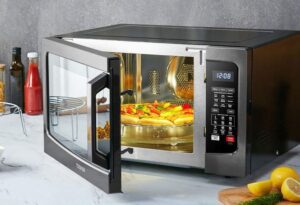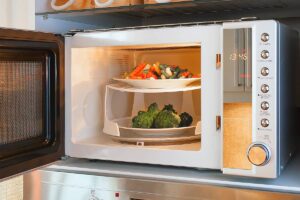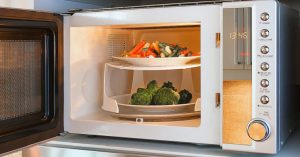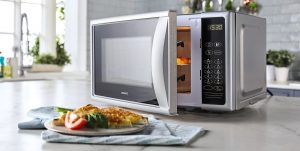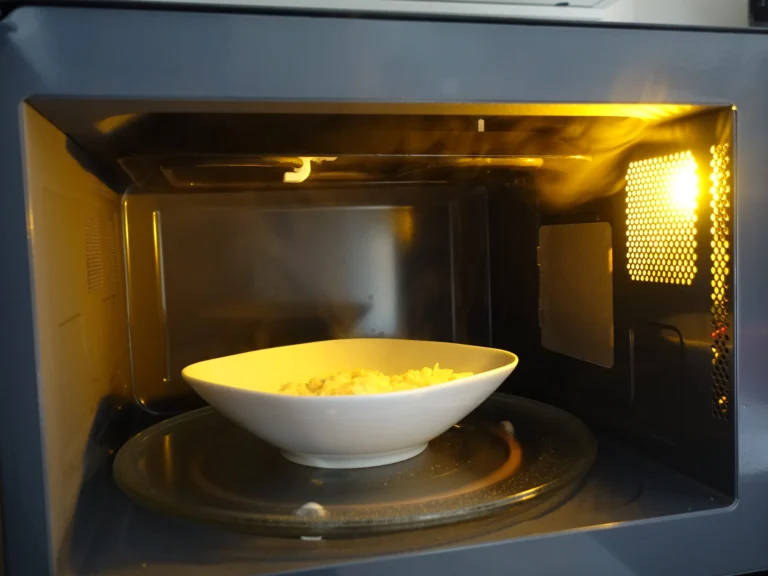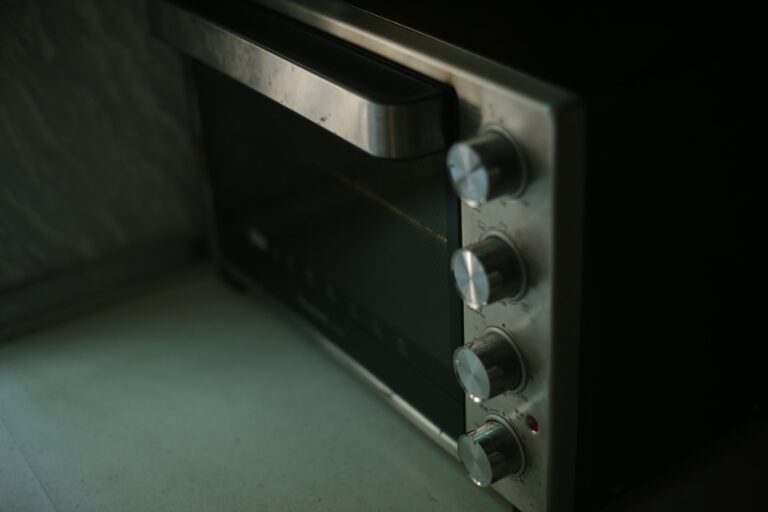How Does Microwave Oven Work? What Role Does Water Play in its Function?
Microwave ovens may seem magical, but you may be surprised to learn that they work more like magic and less like magic tricks performed by magicians.
However, microwaves cook and heat food in minutes still seems like something out of a fairy tale, so let’s take an in-depth look at how microwave ovens work and how they are made to heat food using microwaves instead of fire or electricity.
Knowing the role water plays in cooking and heating food in the microwave is also important.
Microwave ovens use microwaves to heat food. Microwaves are high-frequency waves of energy that, when directed at food, cause the water molecules within it to vibrate and heat up.
Microwaves are shorter than one millimeter, capable of penetrating deep into food, heating it much faster than any other method.
When microwaved, the water in the food creates a gas state, allowing microwaves to penetrate deep and heat the food more effectively.
While microwave ovens have been around since the 1950s, many people are still unaware of how they work, and the role water or moisture plays in their function.
Water plays a very important role in the functioning of a microwave oven. When microwaves hit water molecules, they cause them to vibrate and heat up.
This is why water is necessary for the microwaving process – without it; microwaves would not be able to penetrate deep into the food and heat it as quickly.
The more water content food has, the more easily microwaves can penetrate it.
That’s why microwave cooking works best with foods like meat or vegetables with high moisture content.
Foods with little moisture (such as bread) will not cook evenly because microwaves cannot get inside them easily.
The presence of water also helps prevent your food from burning by absorbing some of the energy and preventing too much from being absorbed by your food.
If you don’t have enough water in your food, you risk overheating it, which can lead to dryness and burnt areas.
How does the microwave oven work?
To understand how a microwave oven works, it is essential to know how it is constructed.
These ovens are built with two important components: an oscillator and a magnetron.
When these components are put together, they create electromagnetic waves that can penetrate any food item inside them and cause them to heat up quickly.
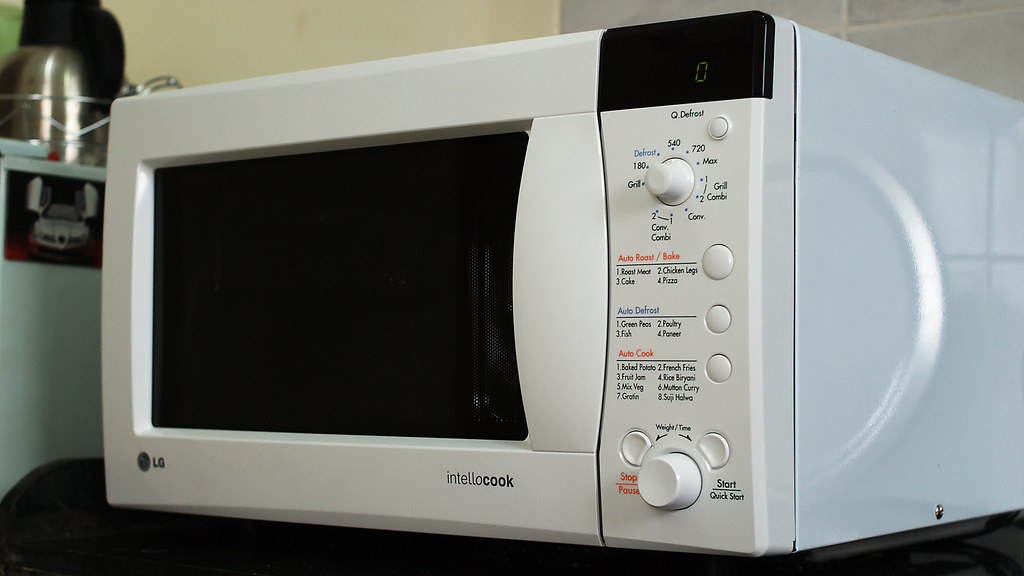
An oscillator’s radio frequency (RF) energy is fed into the magnetron in a microwave oven.
A tube filled with a gas (neon and helium are common choices) creates an electromagnetic field that makes electrons move backward and forward.
The magnetron directs these energetic electrons into two slots at one end. Here, they accelerate rapidly toward opposite walls and collide with them to release radiation.
This radiation excites water molecules in food and causes them to vibrate. This vibration generates heat inside food, which cooks it from within.
In effect, microwaves cook food from the inside out. Microwaves also penetrate deep into food without heating its outer layers.
As a result, foods retain their natural flavors and textures even after cooking for long periods.
The vibration of water molecules by the electromagnetic waves is what causes the food to heat up quickly.
This causes the molecules to move more rapidly and thus generate heat. This is why foods such as vegetables or meats will cook so much faster than items like bread or pasta, which contain less water.
That’s also why microwaves can be used for defrosting: as soon as frozen foods thaw out, their temperature rises again, thanks to those same microwaves.
What Happens When You Put Food in the Microwave?
When you put food into a microwave, it does not just heat up. A whole series of events happen inside your microwave, which helps cook your food more quickly.
These include water molecules vibrating, which causes friction and thus heats up food; water molecules turning to steam and evaporating; and air being trapped within the food and expanding as it heats up. These all help your food to cook.
Do microwaves require water to work?
Yes, water is required to use a microwave. Almost all foods contain water molecules, and those molecules are what microwaves heat up.
This mechanism of heating food relies on molecules within the food that absorb energy from microwaves and convert it into heat.
The amount of time it takes for food to cook depends on how much water is present in that food.
Foods with higher moisture content will heat faster than foods with less moisture. While there are some exceptions (for example, frozen vegetables), most foods require heating water in a microwave oven.
To understand why microwaves work best when cooking foods with high water content, we must look at how heat is generated.
Microwaves are electromagnetic waves of energy that radiate through space. When directed at food, these waves cause the water molecules within it to vibrate and generate heat.
However, if no water is present in your food, you won’t get any heating effect because there aren’t any water molecules to vibrate.
Therefore, microwaves can still cook your food without moisture, but it just won’t happen as quickly or effectively as if you had added more liquid or wet ingredients.
You might also wonder whether or not adding too much water will prevent your food from heating properly.
Surprisingly, adding too much water helps to speed up cooking times. That’s because if you add too much water, steam will form inside your microwave during cooking which increases conductivity and helps to transfer heat throughout your food better.
So go ahead and add that extra tablespoon of water; it may help shorten cooking times.
Of course, don’t overdo it: excess water can also lead to splattering and create unwanted messes.
What do microwaves do to water?
Microwaves energy can penetrate through water molecules, which causes them to vibrate and heat up.
As a result, foods containing water heat quickly, efficiently, and evenly with microwaves.
Foods that contain very little water do not fare as well. Without moisture, it would be impossible for microwaves to heat food evenly.
The reason why microwave heating works so well with some foods but not others has to do with how much water each contains.
Just about everything we eat contains some amount of water, even meat. However, the meat retains far less moisture than fruits or vegetables; therefore, microwave cooking times must be adjusted for different food types.
Can you microwave without water?
Technically, you can microwave without water. However, it will cause your food to lose essential nutrients if you do not have at least a bit of liquid.
Always use a little water when microwaving food to avoid harming your food. The amount of water you need depends on what type of food you are heating and how much time is needed for it to cook.
Microwaving without water takes much longer than usual for food to heat up. Food that contains a lot of liquid tends to heat up faster than food that does not contain any liquid at all.
The more liquid in your food, the more effective it is as a conductor of heat energy from your microwave oven magnetron tube.
You should always add water or juice when heating up something in your microwave oven.
If there is too much water, remove some before cooking so your food does not become soggy or taste diluted.
Some foods, such as pasta, might require extra water to prevent them from sticking together during cooking.
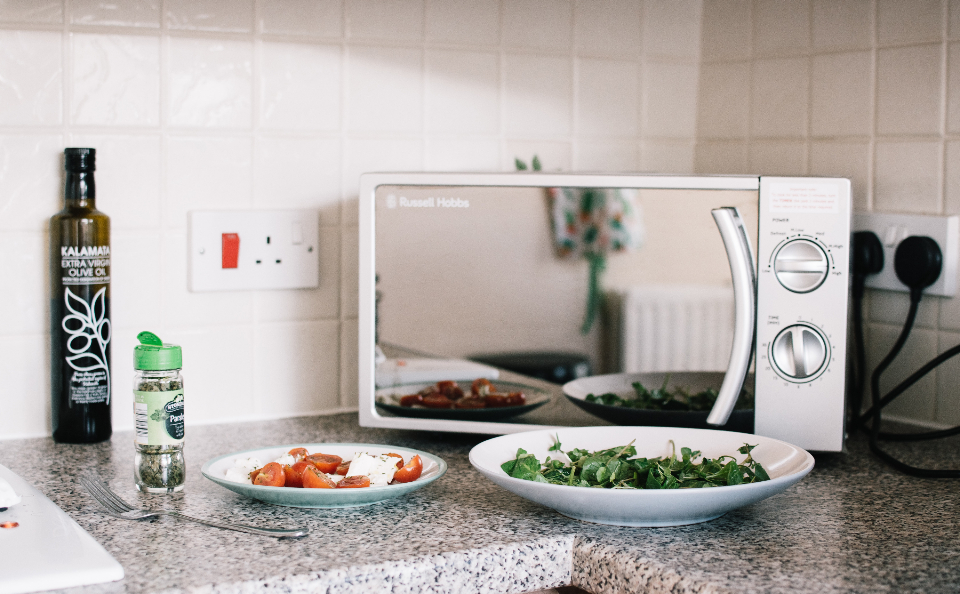
Conclusion
The water within our food plays a key role in how quickly it heats up inside a microwave.
Water molecules vibrate as microwaves pass through them, and when heated to above 100 degrees Fahrenheit, they begin to evaporate.
As they do so, steam forms which expands and push against surrounding food, causing it to heat up.

